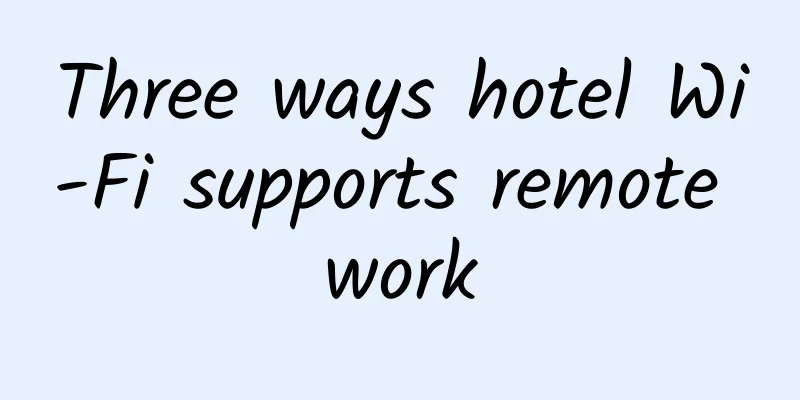The future of wide area networks (WANs) is wireless

|
Cellular wireless networks are an attractive alternative to traditional wired network infrastructure. Enterprise networks that leverage software-defined wide area networks (WANs) and secure access service edge technologies support multiple WAN links. However, networks are still dominated by wired links, with wireless links serving as connections used only when there is no alternative. 5G changes the way WANs are connected. 5G wireless WANs bring diversity, agility, and flexibility, allowing sites and devices to connect easily. Enterprises should jump on the 5G bandwagon to fully realize the benefits that SD-WAN and SASE can bring to their business. Wireless is critical to the digital transformation of enterprises. IDC's Future of Connectivity Survey found that 50% of enterprises want to use 5G, SD-WAN and Wi-Fi 6 to strengthen their competitive position. These enterprises realize that there are many benefits to using 5G wireless broadband as the primary link. Let's take a look at why the future of WAN is wireless.
Cellular networks can reach places that wired networks cannot reach, which have limited options and are time-consuming to set up. 5G wireless as the primary WAN connection makes a lot of sense for pop-up sites or temporary sites. Another key use case for wireless connectivity is remote work.
Facebook suffered an outage in October 2021, and outages like this one pose challenges to diagnosis and resolution, and they also impacted its internal tools and systems for daily operations. Enterprises can use wireless connections for out-of-band management during outages, which can provide remote access when troubleshooting a site is required and cannot rely on traditional wired connections.
5G WWAN accelerates enterprise digital transformation. Wired links can take weeks or months to provision. With 5G WWAN, enterprises can launch branch offices instantly. They can reduce the hundreds of regional service providers they need to manage contracts with to two or three national providers. Every enterprise should take advantage of the bandwidth, latency, and ease of deployment that 5G WWAN offers. One of the best ways to get started with 5G WWAN and convince your organization is to select sites where wired connectivity is an issue. These could be remote sites without fiber buildouts, or mobile or temporary sites with wireless plans from multiple carriers on different client devices. Quickly launching sites with these demonstrates the viability of 5G WWAN, which will be a precursor to more sites switching to wireless. It will also turn any skeptics in the enterprise into 5G enthusiasts. 5G WWAN has the potential to be a game changer for enterprises that adopt it early. Original title: The Future Of WAN Is Wireless , Author: Dr. Ritesh Mukherjee |
>>: How 5G contributes to Industry 4.0
Recommend
From the practice of operators, why "intelligent multi-cloud" has become the key to the success of cloud strategy
If the symbol of the second industrial revolution...
Facebook Open/R, the next generation routing platform and the future of network engineering
[[213724]]...
4G is still growing, but 5G is a bit awkward. Has the promised 5G phone replacement trend come to an end?
Last week, the Ministry of Industry and Informati...
Story: Tang Sanzang's journey to the west: the whole process of network communication
In the first year of Zhenguan, Xuanzang formed a ...
How to improve WiFi signal without changing wireless router
I believe that a considerable number of netizens ...
CUBECLOUD offers 12% off on all items, and CN2 GIA in Los Angeles and CN2 GIA in Hong Kong are available
CUBECLOUD has launched a promotion for Christmas ...
Justg: Russia CN2 GIA line VPS is online with annual payment starting from US$39.99
Last year, the blog shared the news of Justg'...
A thought-provoking report on a major communications failure
Starting at 1:35 a.m. local time on July 2, a lar...
Although there are nearly 100 5G terminals, they are not even the tip of the iceberg.
The quantity, quality and speed of mobile termina...
How to speed up banking business innovation through comprehensive real-time monitoring?
In recent years, with the gradual deepening of th...
OlinkCloud: $5.6/month KVM-1GB/10G SSD/500GB/San Jose
Tribe shared the news about Olink.Cloud in Novemb...
How to set up router bridging is actually very simple
A wireless router cannot fully cover the room. If...
How to solve the voice delay problem after core network upgrade
picture After an operator upgraded its core netwo...
How does private 5G impact Industry 4.0 transformation?
Private 5G networks have become very popular as r...
RAKsmart: Bare Metal Cloud in the US/Hong Kong/Japan $49/month - E5-2620, 32G RAM, 1TB HDD, 50-100M Bandwidth
RAKsmart is a hosting company founded by overseas...









